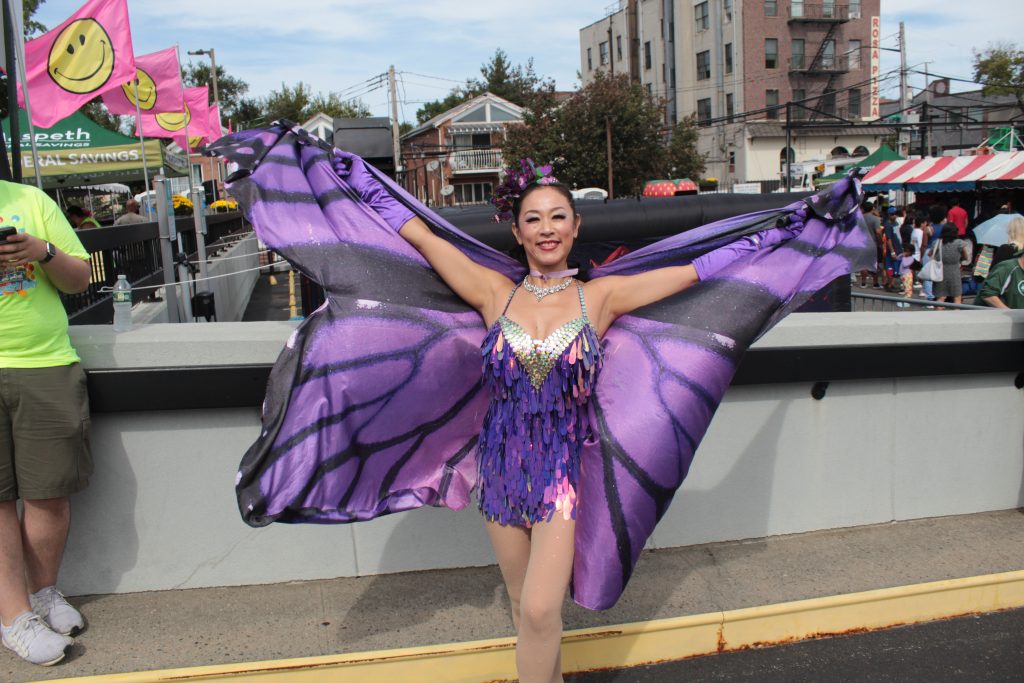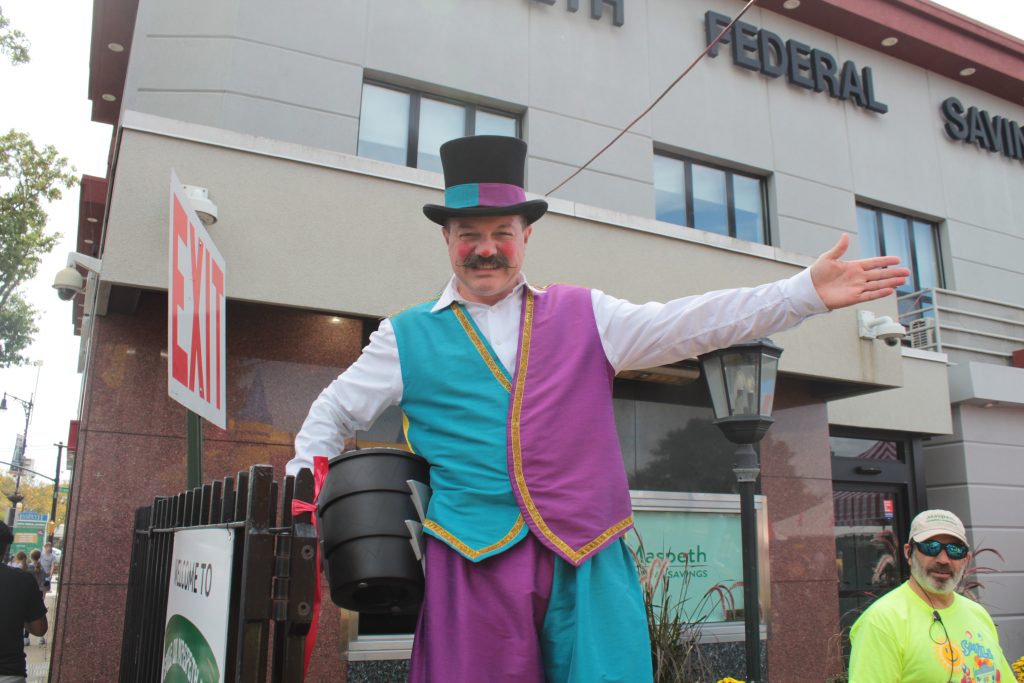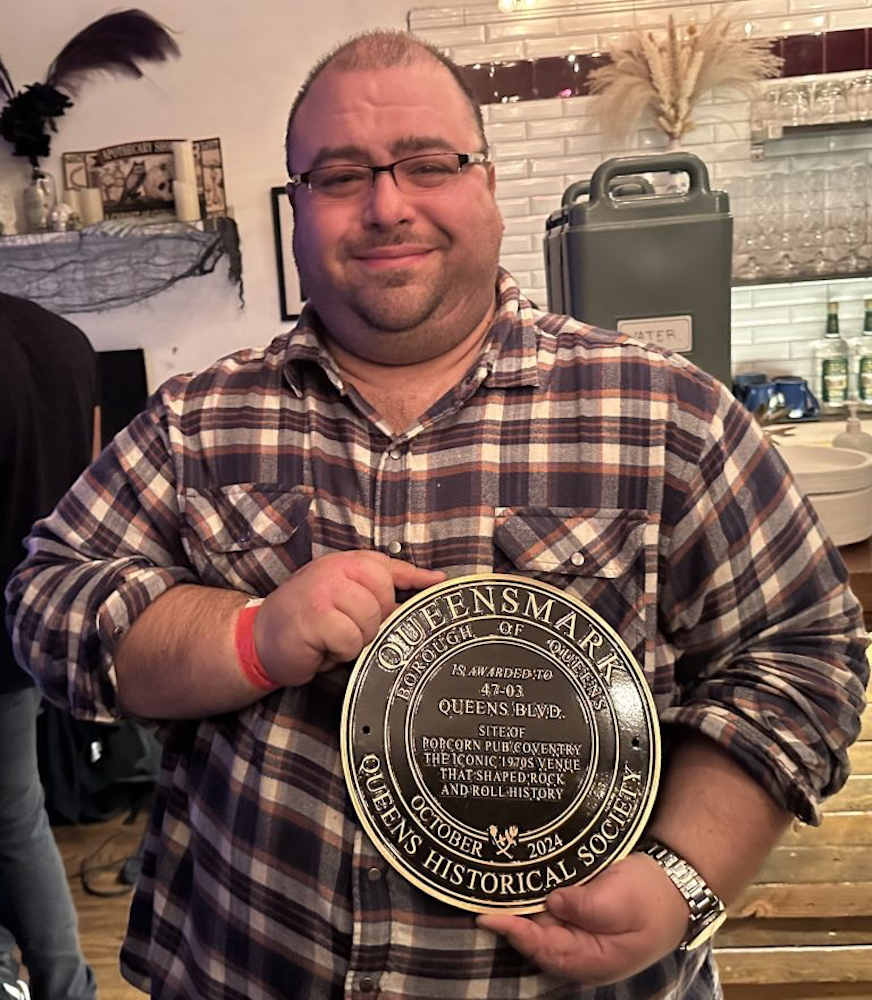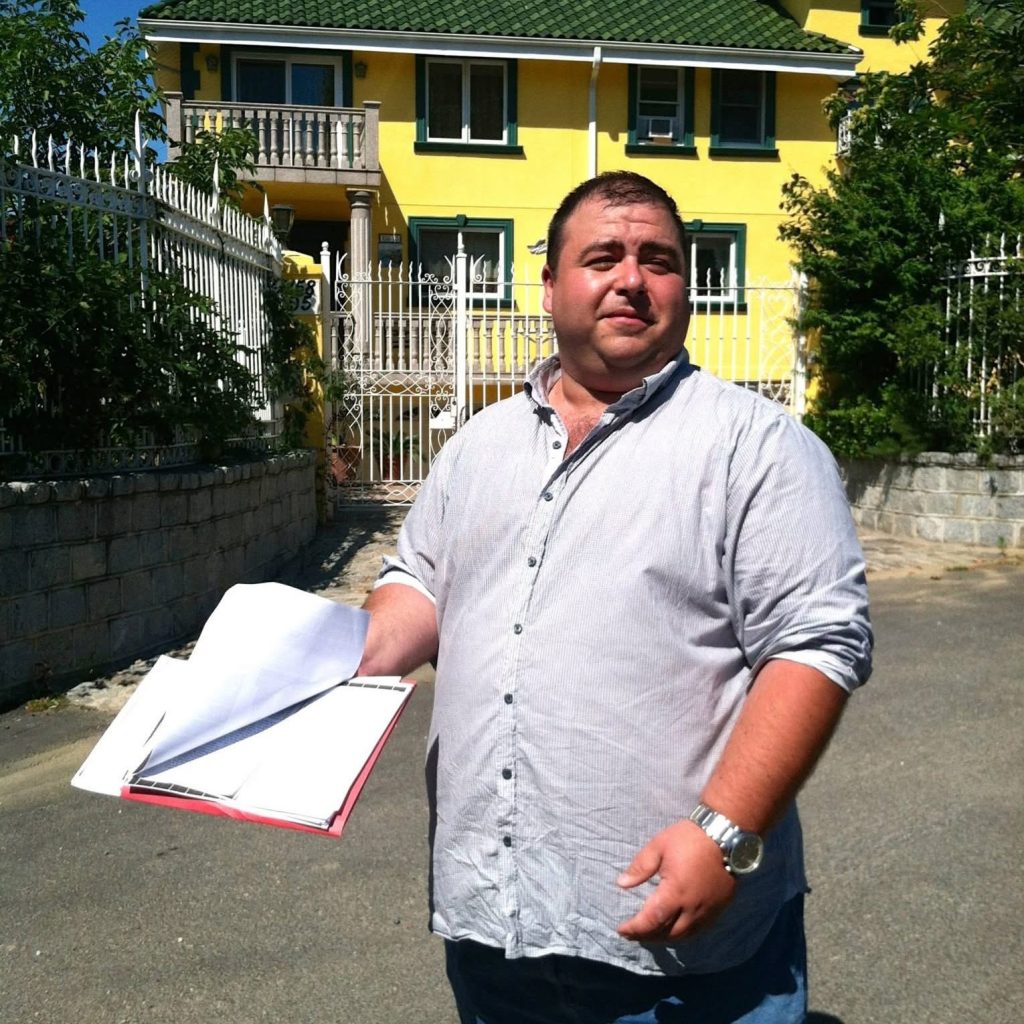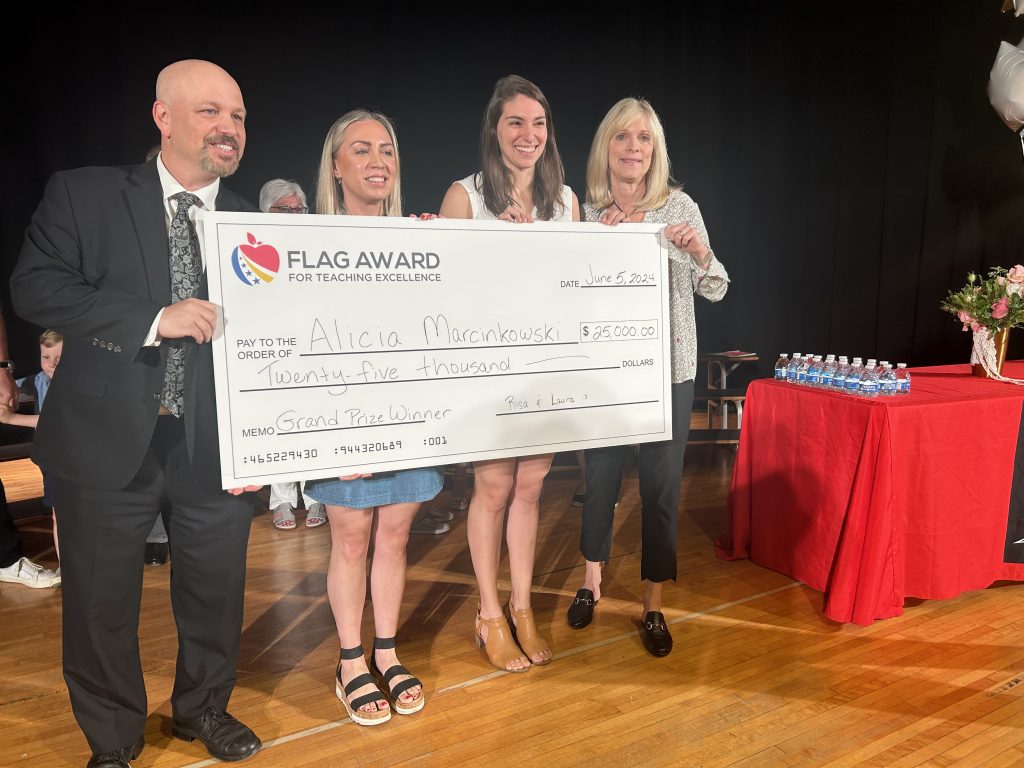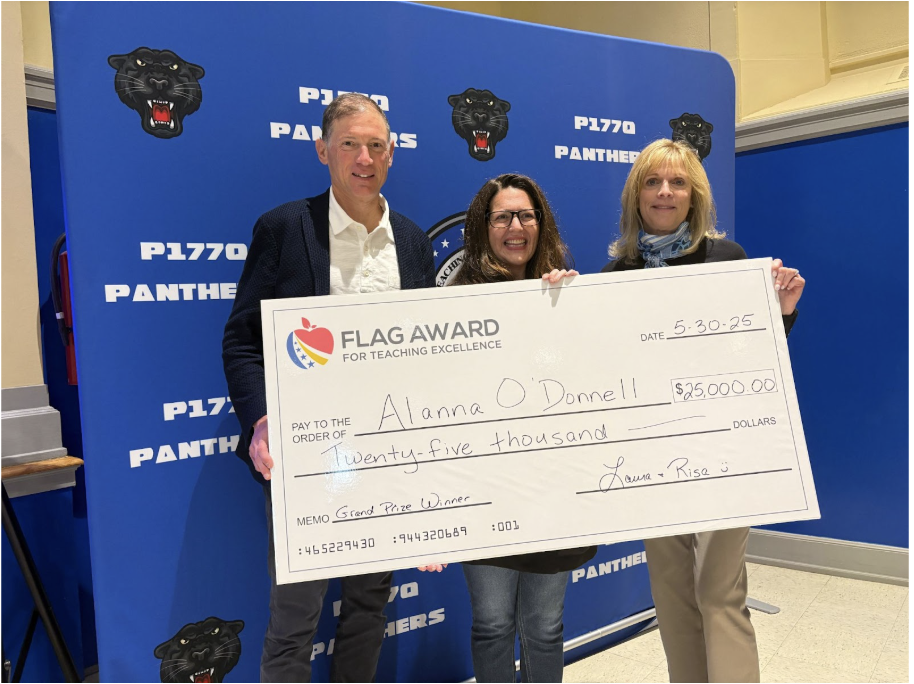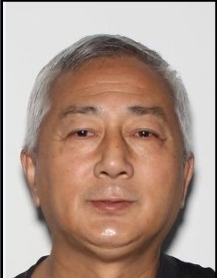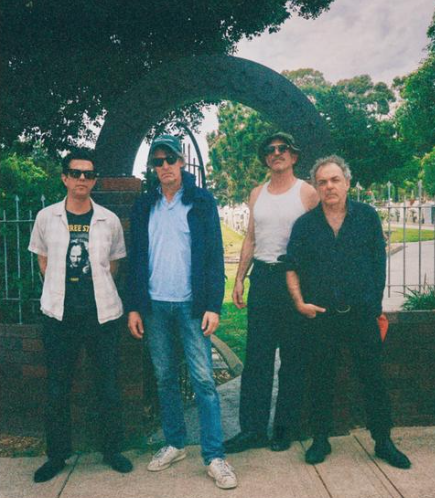
Christian Spencer
The Sergeant Edward R. Miller Post in Glendale, its wooden-paneled walls steeped in decades of history, welcomed a new addition to its collection—a limited-edition 82nd Airborne poster, one of just 8,200 ever made, donated as a tribute to the veterans who call this hall home.
The Post’s history lives in every corner: fading photographs of men in crisp uniforms, plaques etched with names that echo across generations, a ceiling lined with inscriptions honoring those who served, and flags whose fabric has witnessed decades of quiet reverence.
But on July 19, the atmosphere was less solemn and more warmly celebratory, a day to honor veterans with the simple comforts of smoky cheeseburgers fresh off the grill and ice-cold Miller Lite, shared among friends and neighbors bound by gratitude.
While Queens native vets and their guests stayed cool indoors, watching the Mets take on the Cincinnati Reds and calling out at each play, Glendale Kiwanis Club Chair Steve Hansen coordinated the serving of aluminum trays filled with macaroni and sausage on tables draped in red, white, and blue.
Veterans, families, and neighbors mingled beneath the steady hum of ceiling fans and soft radio music, and amid the chatter, a meaningful gesture was about to unfold.
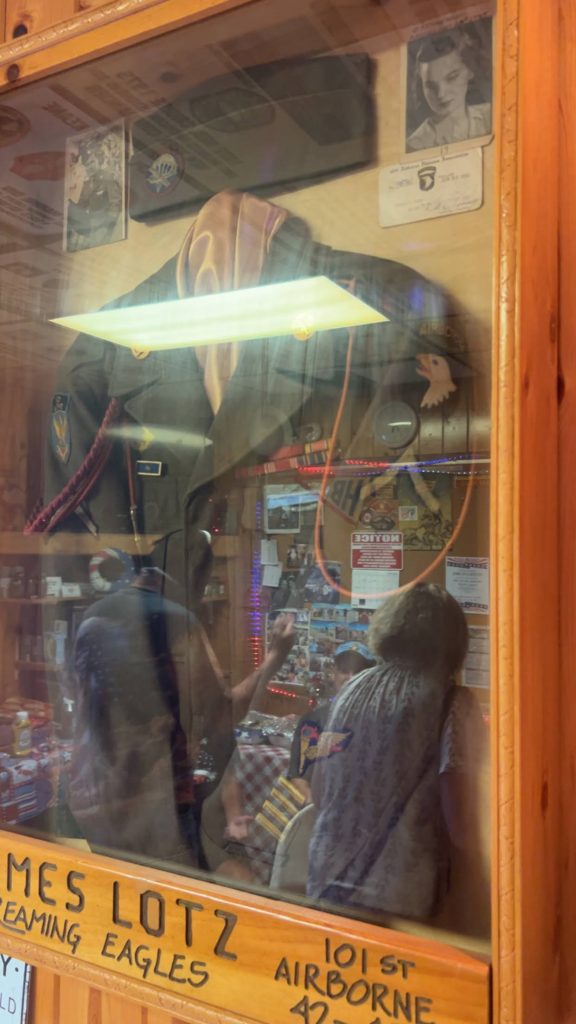
Hansen handed out coins of appreciation. Though metal encased in plastic, the coins carried the quiet weight of years of service; these symbolic tokens allowed these men and women to feel truly seen and honored.
“We’re doing a veterans’ barbecue,” Hansen said. “This is our fifth year doing it. We’re going to present the veterans a thank-you coin, and we’re going to present the post an 82nd Airborne poster.”
The small medallion coins, embossed with the insignias of the Marines, Navy, Air Force, and Army, were tokens of gratitude. But the centerpiece of the cookout was the 19″ x 36″ “Paratroopers Answering the Call” Canvas Giclée by Stuart Brown, a limited edition print valued at approximately $420, according to Spartan Military Prints.
The framed poster represents more than just its striking imagery: airborne troops in mid-descent, parachutes billowing against a bold sky, and drawn weapons. It embodies a deep commitment to the lifelong friendships forged at the Post, bonds as steadfast as the soldiers it depicts.
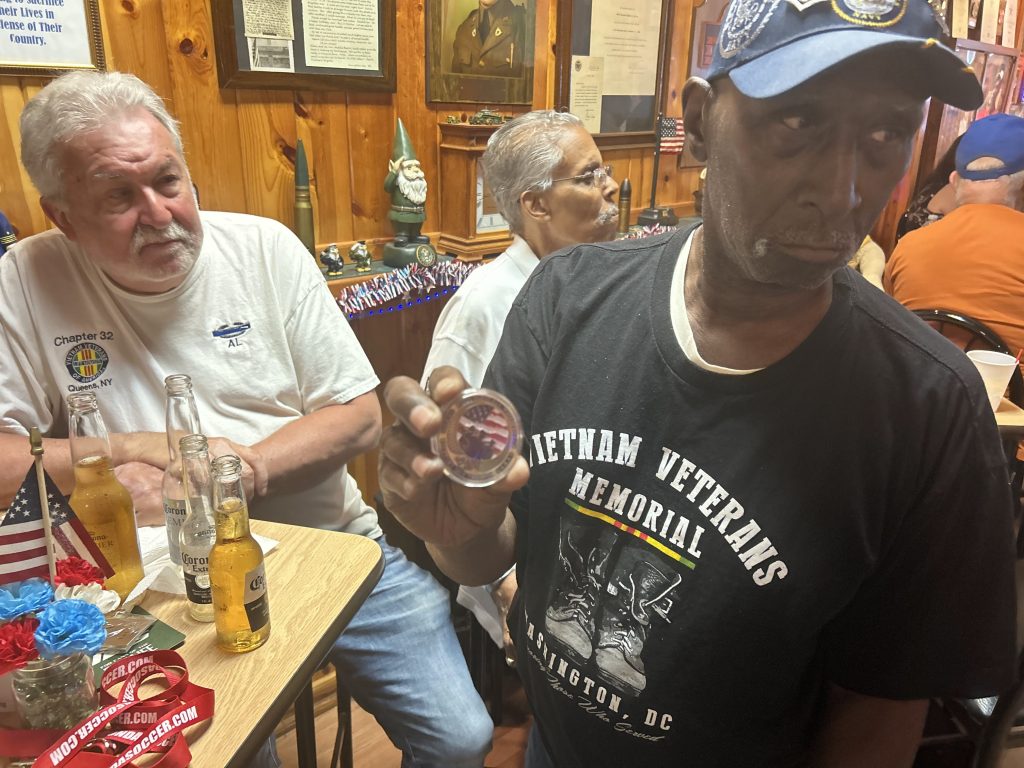
No one understands this better than Tommy Mazza. A past commander and now the quartermaster and treasurer, Mazza has been part of this community since 1969.
“When I came home, I was very upset after losing my best friend,” he said quietly. “We came home together—but he was in a coffin. The guys at the Miller Post made me stop feeling sorry for myself. That’s why I’ve been here ever since.”
He still remembers the day they buried Rudy Rossi at Cypress Hills National Cemetery. Fifty men from the post showed up with flags and banners. He hadn’t known a single one of them then.
“And then someone handed me a card and said, ‘Why don’t you come up to Glendale and talk?’” Mazza said. “I never left.”
Next April will mark the Post’s 75th anniversary, a milestone all the more remarkable given how much the surrounding neighborhood has changed over the years.
Regardless of the time of day or season, Mazza says every gathering at the Post holds deep significance.
The Post started by honoring World War I veterans. Then World War II. Then Korea. Now the Gulf and Iraq and Afghanistan.
“We call them the new kids,” Mazza said. “And I’m the old kid.”
Putting together an event like this takes months. Richie Adams, co-chair of the barbecue, explained.
“It sounds simple, but it’s a lot of work,” he said. “First we set the date. Then we talk to the vendors who’ll donate food. Steve does the shopping and cooking. And you hope people will show up. But when they do—when you see different cultures, different ages, different genders all coming together—it’s worth it. The veterans deserve it more than anything.”
There was no shortage of good times to be had, but as Richie Adams acknowledged, the Post faces an ongoing challenge – bringing in new members to keep the patriotic spirit alive.
“The problem is we don’t get the newer, younger guys,” Adams said. “The older guys won’t be around forever. They’re the ones who keep the places running.”
For some, like Rich Schmidt, the post is more than just a meeting place. It’s where he found belonging.
“This place took me under their wing a long time ago,” Schmidt said. “I’d give anything to keep this place alive. If Tommy [Mazza] ever goes, I don’t know what we’re going to do with this place—he’s the backbone.”
Schmidt isn’t a veteran himself. His brother served in Vietnam, survived a mortar blast that killed his best friend, and came home with shrapnel embedded in his body.
“He spent six months in St. Albans hospital,” Schmidt said. “He’s still alive, up in Albany now. But his name is on a plaque here. It means something.”
He glanced up at the ceiling, where the plaques hang. For him, the coins given out that day weren’t just tokens. They were reminders that service, sacrifice, and memory live on in places like the Miller Post, even as time presses forward.
In a neighborhood like Ridgewood that’s always changing, the Post remains steady like a refuge for veterans, their families, and those who simply choose to remember. Its spirit of camaraderie endures as long as someone keeps showing up.
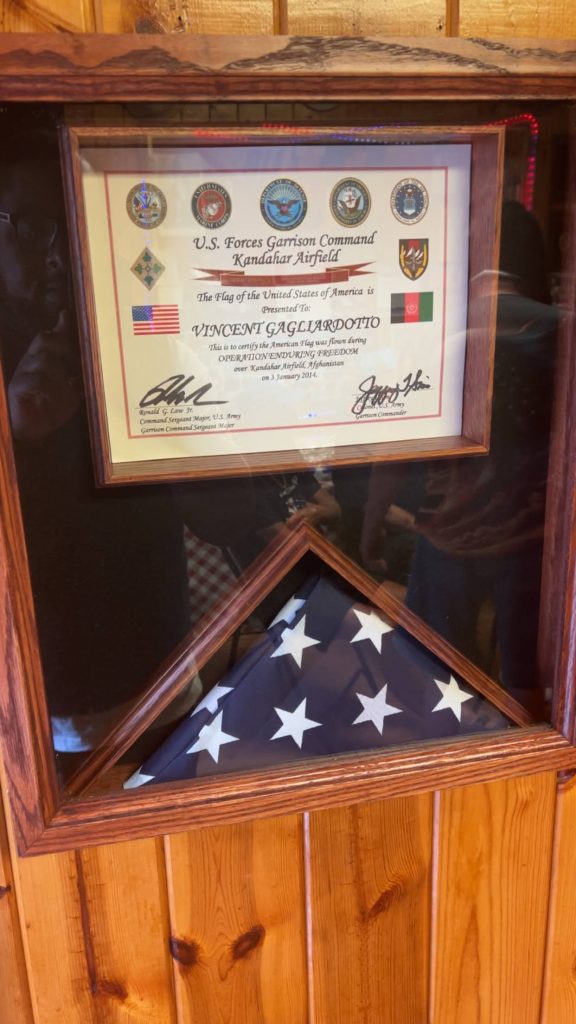
CjQKMFNuYXBjaGF0LzEzLjQxLjAuNDUgKGlQaG9uZTE0LDg7IGlPUyAxOC4wOyBnemlwKSAC

